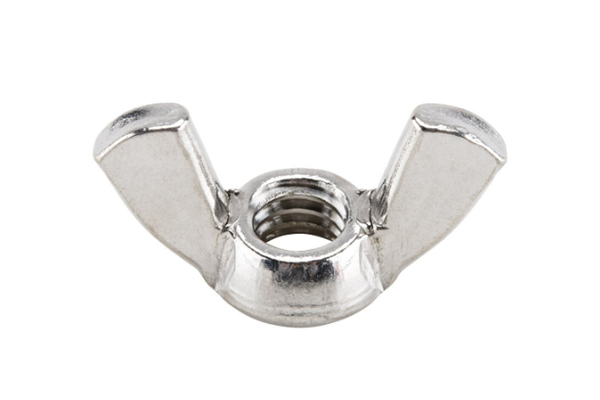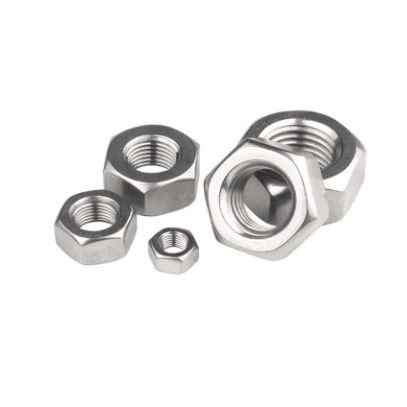In the world of fasteners, the wing nut stands out as a user-friendly and versatile component. This article dives deep into the use wing nuts, their applications, how they work, and why they’re a go-to choice for many projects. Whether you’re a seasoned professional or a DIY enthusiast, understanding the wing nut can significantly enhance your work. We’ll cover everything from the basics of a wing nut to choosing the right wing nut sizes for your specific needs. Let’s explore the benefits of using this simple yet effective fastener.
This article is worth reading because it provides a comprehensive guide to wing nuts, covering their uses, benefits, and how to select the right one for your projects. You’ll gain a solid understanding of this essential fastener and learn how it can simplify your work, especially when dealing with Self-drilling Anchor Systems and Drilling Tools.
1. What Exactly is a Wing Nut? Unveiling the Basics
The wing nut, also known as a butterfly nut, is a type of nut with two tabs or “wings” extending from the sides. These tabs provide a gripping surface, allowing the nut to be easily tightened or loosened by hand without the need for tools. This feature makes the wing nut an ideal choice for applications where frequent installation and removal are required. The wing nut is a type of fastener that works in conjunction with a bolt to hold two or more objects together.
A wing nut typically features internal threading, allowing it to be screwed onto the end of a bolt. The user can twist the nut by hand to fasten or loosen the connection. Its design offers a balance between simplicity and effectiveness, making it a preferred choice in numerous situations. The ease of use and rapid adjustability are key advantages of this fastener.
Wing nuts are used in a variety of applications. They are also known as butterfly nuts, and they are designed for easy hand tightening and loosening. They’re different from traditional nuts, which are typically hexagonal and require a wrench.
2. How Do Wing Nuts Work? Understanding the Mechanism
Wing nuts work on a simple yet effective principle. The nut has internal threading that corresponds to the thread on a bolt. When you tighten a wing nut, you’re essentially screwing the nut onto the end of a bolt. This process draws the bolt through the metal with a threaded hole or a piece of metal, compressing the materials hold two or more objects together. The tabs or wings on the wing nut provide a larger gripping surface, allowing for easy hand tightening.
The presence of two tabs (or wings) is the defining characteristic of a wing nut. These wings provide a gripping surface, allowing the user to tighten or loosen the nut by hand. The design eliminates the need for wrenches or other tools, making wing nuts ideal for situations where quick adjustments are needed. This simple mechanism is the core of the wing nut’s functionality and appeal.
The wing nut is designed for easy hand tightening and loosening, making it very convenient for applications where adjustments are required or when you need to disassemble components frequently. The design is all about simplicity.
3. What are Wing Nuts Used For? Exploring Practical Applications
Wing nuts are used in a wide range of applications, from household projects to industrial settings. They are particularly useful where frequent installation and removal are necessary. Here are some common applications:
- Construction: Wing nuts can be used in Self-drilling Anchor Systems and Drilling Tools to secure components that require regular adjustment or maintenance.
- Automotive: In automotive applications, wing nuts are used to fasten parts that might need to be removed for servicing.
- Furniture: Many furniture designs use wing nuts to fasten parts together, allowing for easy disassemble and reassembly.
- DIY Projects: For home projects, wing nuts are perfect when you need to install and remove components without tools, such as in building temporary structures.
- Pipe fittings: Used for securing and adjusting various plumbing components.
Wing nuts are ideal for any situation that requires quick fasten and unfasten capabilities. They’re easy to use, offering flexibility in diverse applications. They’re used in various applications because they offer convenience and efficiency.
4. Choosing Wing Nuts: A Guide to Wing Nut Sizes and Materials
Choosing wing nuts involves considering several factors, including the size of a wing nut, the material, and the specific application. Wing nut sizes are typically based on the nominal thread diameter of the bolt they are intended to be used with. The wing nuts are available in standard thread sizes such as ¼-20, 5/16-18, and 3/8-16.
Wing nuts come in various materials. The most common material is steel, which can be further treated with a corrosion-resistant coating. Other materials include stainless steel and various alloys. The choice of material will depend on the environment and the level of corrosion resistance required. Stainless steel, for example, is a good choice when corrosion is a concern. Also, when choosing wing nuts, consider the torque requirements of your application.
The size of a wing nut you need depends on the thread size of the bolt you’re using. Ensure that the nut onto the end of a bolt fits the bolt thread correctly. The material is also important, especially if the fastener will be exposed to the elements.
5. Wing Nut vs. Traditional Nuts: What’s the Difference?
The primary difference between a wing nut and traditional nuts, such as hexagonal nuts, lies in their design and ease of use. Traditional nuts have a six sides and require a wrench or a socket to be tighten or loosen. This makes them more secure but less convenient when frequent adjustments are needed. A wing nut, with its two tabs, can be easily tightened or loosened by hand, without the need for tools.
Another key difference is the level of torque that can be applied. Traditional nuts allow for much higher torque values due to the use of tools. Wing nuts, designed for hand tightening, provide a moderate level of tightening force, suitable for applications where high torque is not required. Wing nuts offer a more ergonomic design that makes them easier to use.
Nuts are typically designed for specific uses. Traditional nuts are generally preferred when high torque and a very secure connection are required. Wing nuts are ideal when the connection needs to be adjusted frequently or where quick installation and removal are essential. Wing nuts offer a more ergonomic design that makes them easier to use.
6. Advantages of Using Wing Nuts: Why Choose Them?
The advantages of using wing nuts are numerous, making them a valuable fastener in many applications. Here are some key benefits:
- Ease of Use: The primary advantage is the ease with which they can be tightened and loosened by hand.
- Tool-Free Operation: No tools are required for installation and removal, saving time and effort.
- Quick Adjustments: They are ideal for applications where frequent adjustments are necessary.
- Versatility: They can be used in various applications, from furniture to construction.
- Cost-Effective: They are typically a cost-effective type of fastener.
- Easy Hand Tightening: The wings provide an easy gripping surface for hand tightening.
- Installation and Removal: The ease of installation and removal makes them convenient.
- Easier to Use: They’re easier to use than traditional nuts.
Wing nuts are ideal in situations where ease of use and quick adjustments are key. They’re an excellent choice for temporary structures, frequently disassembled items, and any application where tool-free operation is desirable. Their versatility makes them valuable.
7. How to Install and Remove a Wing Nut: Step-by-Step Guide
Installation and removal of a wing nut are straightforward processes. Here is a step-by-step guide:
- Preparation: Ensure you have the correct size of a wing nut that matches the thread of the bolt.
- Placement: Place the wing nut onto the end of a bolt or the threaded stud.
- Thread Engagement: Start turning the wing nut by hand. Ensure it engages the thread properly.
- Tightening: Continue tightening the wing nut by hand until it’s snug. Avoid over-tightening, as this can damage the nut or the materials being fasten together.
- Removal: To remove the wing nut, simply loosen it by turning it counterclockwise by hand until it is completely off.
- Disassemble: Once the nut is twisted from the end of the bolt, you can disassemble the components.
Wing nuts are ideal because they are easily tightened and loosened. Following these steps will ensure a secure and efficient installation and removal process.
8. Safety Considerations When Using Wing Nuts
While wing nuts are easy to use, it’s important to consider safety when using them. Here are some safety guidelines:
- Proper Size: Always use the correct size of a wing nut for the bolt. Using the wrong size can lead to a loose connection or thread damage.
- Avoid Over-Tightening: Over-tightening can strip the thread or damage the materials.
- Regular Checks: For applications where vibration or movement is present, periodically check the wing nut to ensure it remains secure.
- Material Compatibility: Ensure the wing nut material is compatible with the environment to prevent corrosion or degradation.
- Use Wing Nuts: Use wing nuts in applications that require frequent adjustments.
By following these safety guidelines, you can ensure that wing nuts are used safely and effectively.
9. Troubleshooting Common Wing Nut Issues
Even with their simplicity, you may encounter some issues with wing nuts. Here’s how to troubleshoot common problems:
- Difficulty Tightening: If the wing nut is difficult to tighten, check the thread on the bolt and in the nut. Clean or replace any damaged components.
- Loose Connection: If the connection becomes loose, check that the wing nut is securely tightened and that the materials are not worn or damaged. In some cases, adjustments are required.
- Corrosion: In corrosive environments, the wing nut may corrode. Replace the nut with a more corrosion-resistant material or use a protective coating.
- Stripped Threads: Over-tightening can strip the thread. If this happens, replace the bolt or the wing nut, or both.
- Failure to Loosen: If you’re unable to loosen the wing nut, try applying penetrating oil to the thread and let it sit before attempting again.
Addressing these issues will help maintain the functionality and safety of your wing nut connections.
10. Where to Buy Wing Nuts and Get Expert Advice
Wing nuts are available at most hardware stores, home improvement centers, and online retailers. You can easily find them in various wing nut sizes and materials. When purchasing, consider the following:
- Quality: Choose high-quality wing nuts from reputable brands.
- Material: Select the material that suits your application (e.g., steel, stainless steel).
- Size: Ensure you select the correct wing nut size to fit the bolt.
- Quantity: Buy the quantity you need for your project.
- Expert Advice: If you need help, seek advice from a hardware store employee or a construction professional. Contact us for more information.
By purchasing from a reliable source, you can be confident in the performance and durability of your wing nuts. Also known as a butterfly or butterfly nut, these nuts are a common type of nut used in many industries. The wing nut is a convenient type of fastener that can be tightened and loosened by hand.
Here is a table summarizing key aspects of wing nuts:
| Feature | Description |
|---|---|
| Definition | A type of nut with two tabs or “wings” extending from the sides. |
| Purpose | To fasten two or more objects together, allowing for easy hand tightening and loosening. |
| Operation | Tightened and loosened by hand without the need for tools. |
| Applications | Construction, automotive, furniture, DIY projects, pipe fittings. |
| Materials | Steel, stainless steel, various alloys. |
| Sizes | Based on nominal thread diameter (e.g., ¼-20, 5/16-18). |
| Advantages | Ease of use, tool-free operation, quick adjustments, versatility, cost-effectiveness. |
| Safety | Proper size, avoid over-tightening, regular checks, material compatibility. |
| Troubleshooting | Difficulty tightening, loose connection, corrosion, stripped threads, failure to loosen. |
In summary, remember these key points:
- Wing Nuts are designed for easy hand tightening and loosening.
- Always choose the right wing nut sizes for the bolt.
- Wing nuts are suitable when adjustments are required or frequent installation and removal are needed.
I hope this article has provided a comprehensive overview of the wing nut. Whether you are installing a door, or dealing with Self-drilling Anchor Systems and Drilling Tools, knowing how to use a wing nut can simplify your work and improve efficiency.
Disclaimer: The information provided in this blog post is for general information purposes only. It is not intended to be a substitute for professional advice. Any reliance you place on such information is strictly at your own risk. I make no representations or warranties of any kind, express or implied, about the completeness, accuracy, reliability, suitability, or availability with respect to the blog post or the information, products, services, or related graphics contained in the blog post for any purpose. In no event will I be liable for any loss or damage including without limitation, indirect or consequential loss or damage, or any loss or damage whatsoever arising from loss of data or profits arising out of, or in connection with, the use of this blog post.
Post time: 2 月-20-2025
















